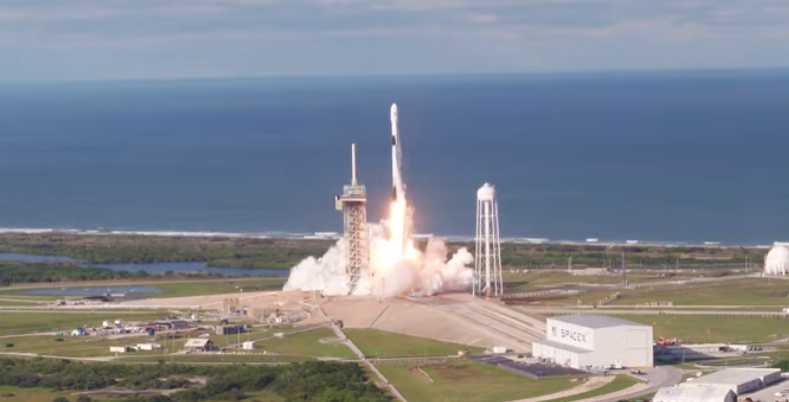
SpaceX has finally completed its Starship's super heavy booster prototype, rolling it out of its following and installing it at the launch pad.
The Super Heavy Booster 3 or (B3) stands at 65 meters or 215 feet tall. It is precisely the same height as a giant two-stage Dragon Spacecraft and Falcon Rocket. SpaceX expects to take a singlehandedly weight at least six times more than Falcon 9 with full fuel as long as it is loaded with methane propellant and liquid oxygen.
Components of Supper Heavy Booster
As soon as Super Heavies are already outfitted with an entire 32 Raptors, which is more engines than any rocket in history, its booster will start producing over twice more than the thrust that NASA's Saturn V Moon rocket produces.
It is currently the most potent vehicle that has ever flown.
Super Heavy Booster is made of three tank domes, 36 steel rings, and dozens of significant essential components. It heavily borrows from the Starship production material that SpaceX has built, refined, and revolutionized over the last year and six months.
Typical boosters utilize similar welding and integration jigs and strategies. They are also built out of the identical stringers, steel rings, dome "gores," and stiffeners.
What Are Super Heavy Boosters For?
In a report, Teslarati mentioned that Super Heavy Boosters are a lot simpler than Starships.
Well, how do Starships work?
Starships typically need custom nose cones, extra plumbing, secondary header tanks, actuating flaps, and a whole lot more. On the other hand, Super Heavy Boosters do not require a heat shield, and they only need two main tanks made from the same steel ring.
However, the forward, common, and thrust Super Heavy domes are almost always either custom-built or need significant modifications.
SpaceX Photos on Twitter
Elon Musk recently revealed that the Boost 3 was difficult to build and that it would only be used exclusively for ground tests.
Super Heavy on road & 7th Tower segment added pic.twitter.com/SJIHA3BLhL
— Elon Musk (@elonmusk) July 1, 2021
Musk also reiterated that Super Heavy B4 is the first booster that will be flying.
The SpaceX CEO also mentioned that most of Super Heavy Booster's design would change between Booster 4 and Booster 3, which led to questions regarding the company's gains on Booster 3 ground tests.
Various photos and videos of the booster also surfaced on the web via @BocaChicaGal and @SpacePadreIsle's tweets.
Hopper for scale 😱🚀 pic.twitter.com/LFECyVcWjW
— SpacePadre (@SpacePadreIsle) July 1, 2021
Booster 3 as it rolls past the end of San Martin Blvd. Incredible to watch it make it’s way to the launch site. It’s moving right along!
— Mary (@BocaChicaGal) July 1, 2021
@NASASpaceflight pic.twitter.com/3unJyQK58I
Teslarati reported that SpaceX's ground tests are already on their way, and that they will begin as early as July 5, Monday, right after the space company transports Super Heavy Booster 3 from its factory towards the launch pad.
Following Starship's footsteps, Super Heavy Booster's very first hurdle will most likely become an ambient proof test. Nitrogen gas will be used to check the booster for possible leaks and to verify its general structural integrity when placed under extreme pressure.
Related Article : SpaceX Delays Launching Rideshare Mission of 88 Satellites Due to Possible Interference With a Plane
This article is owned by Tech Times
Written by Fran Sanders
ⓒ 2025 TECHTIMES.com All rights reserved. Do not reproduce without permission.




